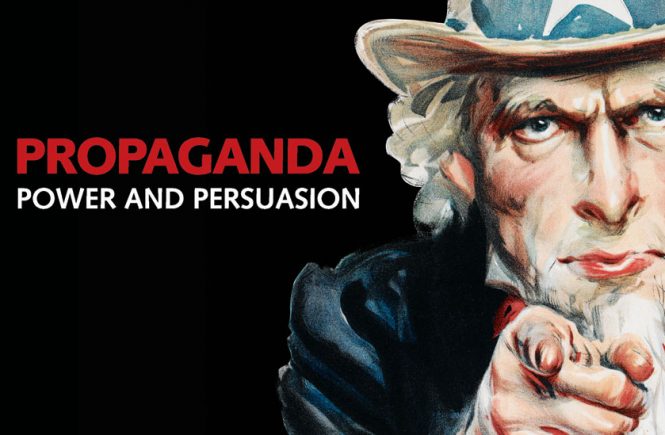MODERN PROPAGANDA THEORY Consider the Hippler and Sproule characterizations of propaganda from earlier in this chapter: simplify a complex issue and repeat that simplification; use covert, massively orchestrated communication; and use tricky language to discourage reflective thought. Some contemporary critical theorists argue that propaganda conforming to these rules is alive and well today and that it is practiced with a stealth, sophistication, and effectiveness unparalleled in history. They point to a number of “natural beliefs” that have been so well propagandized that meaningful public discourse about them has become difficult if not impossible. Political discourse and advertising are frequent areas of modern propaganda study, and the central argument of this modern propaganda theory is that powerful elites so thoroughly control the mass media and their content that they have little trouble imposing their Truth on the culture. Close your eyes and think welfare. Did you envision large corporations accepting government […]
Persuasion, Elements of Persuasion and Resisting Persuasion: Attitude inoculation
What is persuasion? What are the essential elements of Persuasion? Give summary of the case study “Resisting Persuasion: Attitude inoculation”. Persuasion : Persuasion refers to the process by which a person’s attitudes or behaviour are, without duress, influenced by communication. Persuasion pervades over almost all human activities and it is geared to information transmission in such a way as to get people to revise old pictures (Predisposition) in their minds, or form new ones, and thus change their behaviour. To some others persuasion is seen as “Communication to influence choices”. Still to others it is “a process that changes attitude, belief, opinion or behaviour”. Actually, we try to sell ideas, concepts, products etc. through the art of persuasion. Persuasion may be carried out in offices, workplaces, homes, etc. by fellow workers or neighbours. Persuasion has been treated as an art, a craft and a science since ancient times and classical […]
Persuasion, Its Components, Principles and Techniques
What do you know about Persuasion? Explain its components, principles and techniques in detail. Persuasion : Persuasion refers to the process by which a person’s attitudes or behaviour are, without duress, influenced by communication. Persuasion pervades over almost all human activities and it is geared to information transmission in such a way as to get people to revise old pictures (Predisposition) in their minds, or form new ones, and thus change their behaviour. To some others persuasion is seen as “Communication to influence choices”. Still to others it is “a process that changes attitude, belief, opinion or behaviour”. Actually, we try to sell ideas, concepts, products etc. through the art of persuasion. Persuasion may be carried out in offices, workplaces, homes, etc. by fellow workers or neighbours. Persuasion has been treated as an art, a craft and a science since ancient times and classical thinkers like Aristotle and Cicero devoted […]
Various Techniques of Persuasion
What are the various techniques of persuasion? Explain with your own examples. Techniques of Persuasion We now turn to three important techniques commonly used in persuasion: appeals to humor, appeals to sex, and extensive repetition of an advertising message. Audiences and communicators need to understand their applications—and their potential misuse. Appeals to Humor: The use of humor is a popular technique in communication. Many public speakers obviously believe in the importance of beginning their talks with a humorous story. Studies have suggested that 15 to 20 percent of television commercials contain some element of humor (Kelly & Solomon, 1975; Duncan & Nelson, 1985). In the typical study of the effects of humor on attitude change or other variables in the hierarchy of effects, different groups are exposed to different versions of the same message—one with humor and one without. For instance, Brooker (1981) examined the effects of humor in two […]
